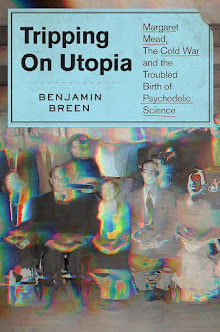This is the third in an occasional series of posts about my favorite 'vanished' civilizations (the
first was on Carthage and the
second was on the mysterious Tocharians). I put the word 'vanish' in scare quotes because in fact few if any civilizations truly disappear: they simply transmute. Ancient Carthage was destroyed as a state by the Roman empire, but the people who composed the Carthaginian empire never really went away.
(St. Augustine, for instance, is usually thought of as a Roman, but he was born in the Carthaginian heartlands and was of Berber ancestry.) But there is something essential about a culture that can be lost to time or conquest, and that's what I want to get at with this series.
Both of these points are certainly true of this week's civilization: the culture that grew up around the ancient city of
Trebizond (currently known as Trabzond), on the southern shores of the Black Sea. I had always wondered about the place named Trebizond since I was a kid looking through my father's
Penguin Atlas of History
(a really wonderful series of books by
Colin McEvedy). But what sparked my attention again was stumbling across
Pisanello's remarkable depiction of Trebizond at the height of its wealth in a fifteenth century fresco complete with sailing ships, saints, dogs and hanged men:
A detail of the city itself (how realistic, I don't know):
Trebizond reached its cultural and political peak in the twelfth century, when it was an important breakaway state from the Byzantine empire and one of the principle termini of the
Silk Road (see below map), but its historical roots are ancient.
The city began as a Miletian Greek colony whose citizens made their living by trading with the 'barbarous' peoples of the northern Black Sea coast -- called by the Greeks
mossynoikoi ("those who dwell in wooden towers"). According to the historian
Xenophon, the
mossynoikoi were "fair-complexioned and white-skinned, with their backs variegated and their breasts tattooed with patterns of all sorts of flowers."
 |
| Coin of Mithridates VI of Pontus. |
In the first century BCE, Trapezius/Trebizond became a center of the little-known
Pontic Kingdom of Mithridates VI (143-63 BCE), a Greco-Iranian military genius who claimed descent from both
Alexander of Macedon and the Persian Emperor
Darius. Trapezius gained reknown as the home port for the Pontic Fleet of Mithridates, who successfully evaded Roman conquest for decades and became legendary in the ancient world for his supposed resistance to poisons, a feat made possible by his continual ingestion of small amounts of poison provided by a group of
Scythian shamans called the Agari. This practice eventually allowed him to build up a tolerance and, hence, immunity. (For more on Mithridates, poison and the Agari, see
this interview with Adrienne Mayor, the author of a
well-received recent biography of the monarch called
The Poison King.)
 |
| A bust of Mithridates. |
In the end, of course, the Romans won, and Trebizond became incorporated into the empire as a key port city and an important buffer between the Roman world and the Armenian empire and the states of the Caucasus. Its important regional role continued under a period of Muslim rule in the vast
Umayyad Caliphate of the 8th century CE, and through to its reconquest by a resurgent Byzantine Empire in the early Middle Ages.
However it was not until the sack of Constantinople by Christian crusaders in 1204 that Trebizond reached its cultural and political zenith, when it became the capitol of a new breakaway Empire of Trebizond declared by the Georgian prince Alexios Komnenos.
 |
| Alexios and his queen. |
Under Alexios Trebizond developed quite a distinctive regional culture which mingled influences from the Muslim and Byzantine worlds with those from the ancient societies of the Caucasus Mountains. The monasteries built at this time are architectural standouts for their gravity-defying mountaintop construction, and are to me the most distinctive legacy of the empire:
 |
| A view from a courtyard at Sumela. A frescoed chapel wall is visible to the left. |
The Trebizondian Empire actually managed to outlast the Byzantine Empire itself, holding off the Ottomans until 1461, some eight years after the fall of Constantinople. However, it too ultimately fell to the Turks, and the modern day Republic of Turkey, successor to the Ottoman Empire, is where the city lies to this day. The city endures, as it has always done, but the Empire of Trebizond (and the Pontic Kingdom that established its greatness) have faded away.
Some Trebizondian ruins:
 |
| A Byzantine hilltop fortress, at left, and at right a Roman-era tomb carved into a cliffside. |
 |
| A Trebizondian castle and the secret tunnel that connected it to the world. |
As an aside, the legends surrounding Mithridates and his poison-resistance gave rise to the substance known as
Mithridatium or Mithridate, believed in the early modern period to be one of the most powerful medicines known to man, a universal antidote for all poisons. Interestingly, Mithridatium never had any one common recipe: it was more like a melange of all the most expensive and rare materia medica, from opium and ground pearls to the bones of salamanders and even the ashes of mummies! (On mummy as medicine see
my earlier post touching on the subject).







1 comment:
Thank you for this. I discovered trebizond, of which I knew nothing, through the writings of the great hisotrical fiction author Dorothy Dunnett. It's wonderful to pad out a background to her depiction of the cultural and intellectual gem that was Trebizond at the time.
Post a Comment